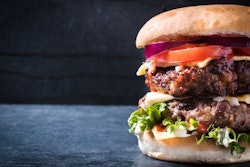For engineers, meeting part design challenges can be exceedingly difficult when traditional materials like plastic, steel, and rubber do not possess the required specialized characteristics.
Here are five key points that make a strong case for why urethane is providing engineers with the design flexibility they need to produce cost-effective parts that meet ever more demanding design specifications.
No. 1: Urethane Provides Specialized Load Bearing Properties
“Urethane offers elastomeric characteristics that provide a different type of load bearing, not as rigid as plastic or metal, and capable of managing energy in a more versatile way,” says Fred Boyle, senior process engineer at Argonics, one of the U.S.’s largest producers of wear-resistant and customizable urethane products.
Urethane excels, for instance, in impact loading applications such as for bumpers, shock absorbers, die pads, machinery mounts, vehicle suspension mounting bushings, or anything to do with shock or vibration.
No. 2: Urethane Enables Maximum Abrasion Resistance
The outstanding abrasion resistance of urethane elastomers has led to many important mining applications where severe wear is a problem.
“Rubber is not as abrasion resistant as urethane, and fancy steel liners do not provide sufficient resistance either,” says Charles Pratt, Operations Manager at Kinder Australia, an independent supplier and manufacturer of conveyor and bulk material handling equipment.
Pratt turned to a proprietary urethane formulation by Argonics called Kryptane, an extremely wear-resistant material for applications where abrasion, sliding, or impact occurs regularly. Examples of its use include chute, bin and hopper liners; pipe, fitting and valve liners; impact-and abrasion-resistant plates; blasting curtains and screens; vibration pads; seals and gaskets; as well as truck bed liners, wheel chocks and crossover pads.
“In testing for some mining applications, we found that the urethane skirtings on the outside of a conveyor can last 10-15 times longer than rubber,” says Pratt. “Compared to a steel liner on the inside of a conveyor, a urethane liner can get 5-8 times the life.”
No. 3: Urethane Offers A Variety Of Adaptable Properties.
Because urethane’s properties are tailorable over wide ranges of hardness, resilience, spring rate and dynamic properties, its versatility offers custom solutions to difficult design challenges.
“Argonics was able to formulate a conveyor skirting material that was not only abrasion resistant, but also soft and slippery to minimize any potential conveyor belt wear,” says Pratt. “The urethane is very customizable. For applications such as coal mining, you can also make it resistant to fire and temperature as well as anti-static.”
No. 4: Urethane Parts Can Be Produced With A Low Cost, Low Pressure Mold
Urethanes can be poured as a liquid mixture into less expensive, low pressure molds so complex mold cavities can be filled without high-pressure molds and presses.
This provides a multitude of advantages, not the least of which are lower tooling and production costs than both rubber and plastic molding, and lower material cost than metals and ceramics.
No. 5: Urethane Can Bond With An Array Of Substrates
Urethane is versatile in how it bonds with a wide range of substrates such as steel, aluminum, fiberglass and plastic.
When engineers require unique high-performance properties in the construction of component parts, they can often improve their design by utilizing urethane, and by partnering with an expert provider who can tailor the parts to their exact design requirements.
Del Williams is a technical writer based in Torrance, CA.























